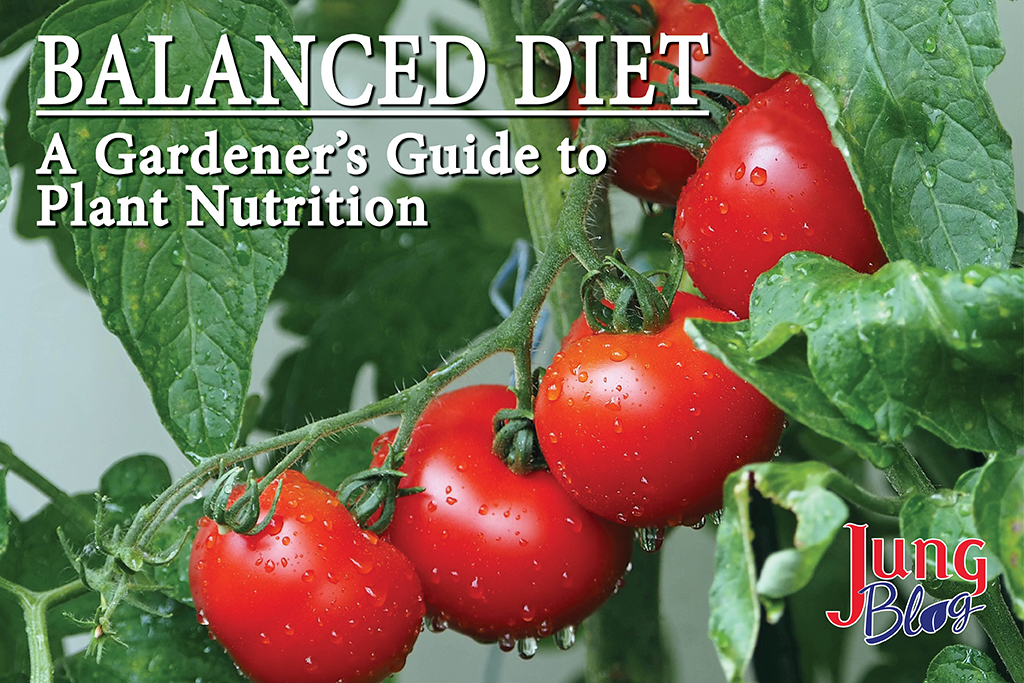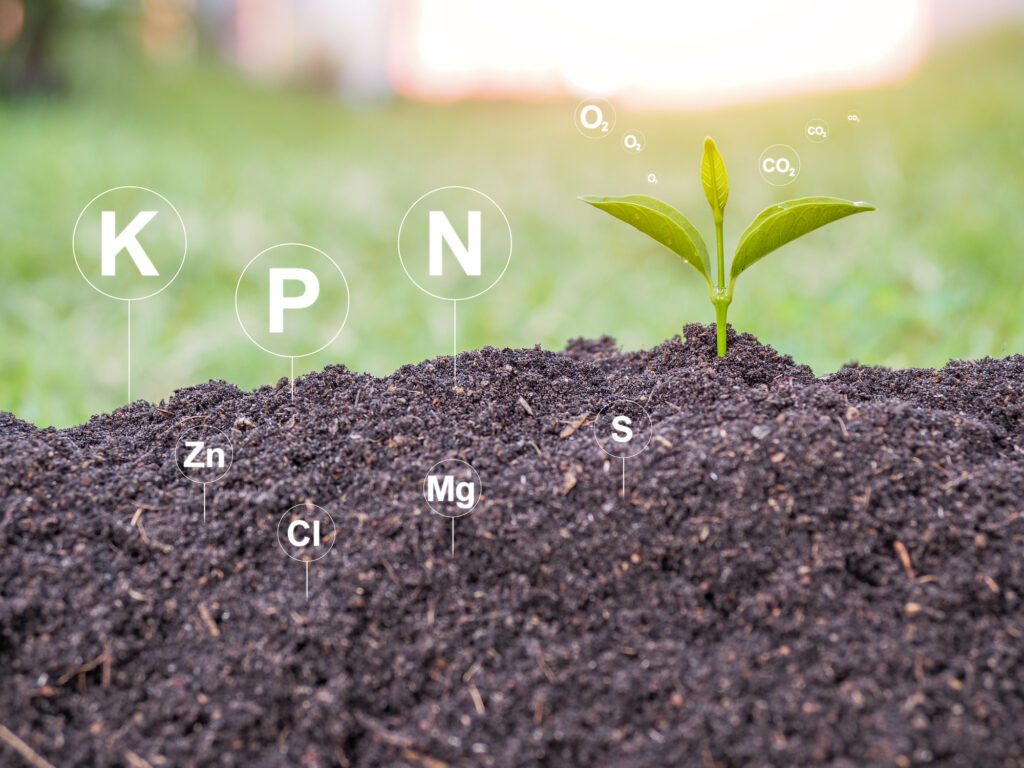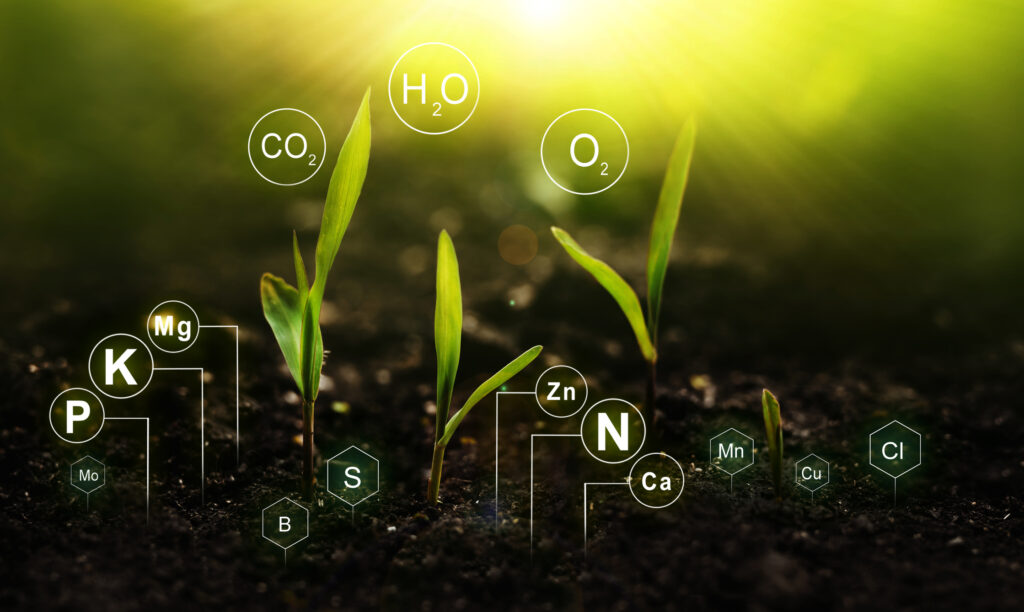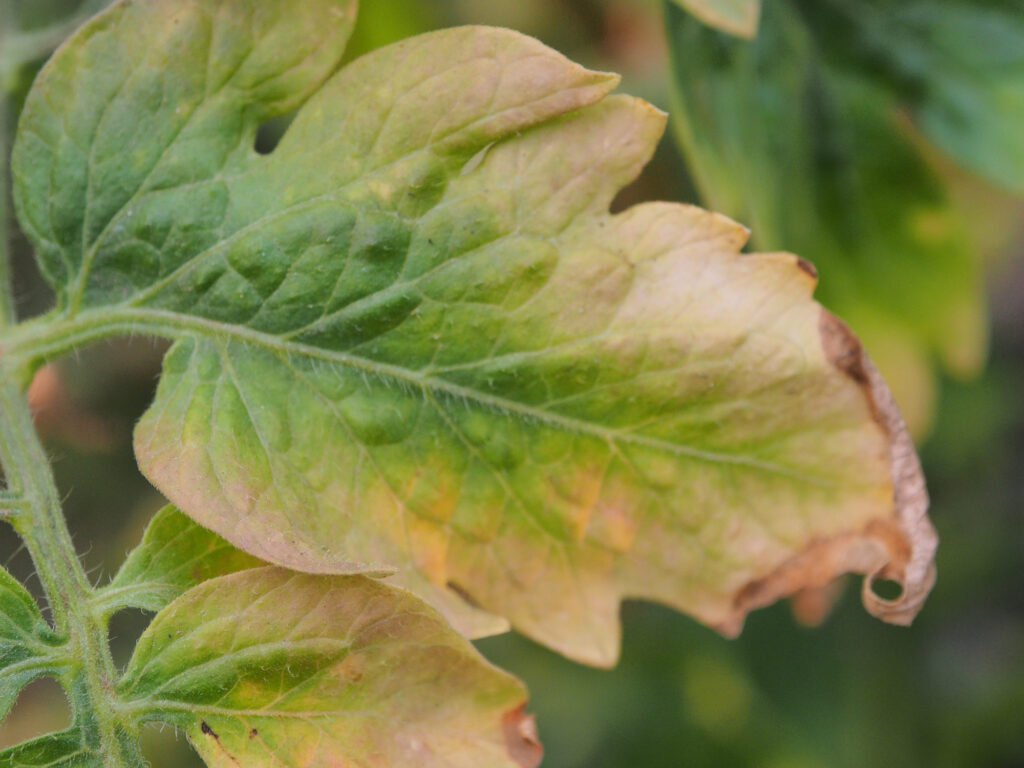
Every gardener knows that plants require several different nutrients to grow, but what specific nutrients do plants use and for what purpose? Here is a little overview and a science refresher.
Macronutrients

Macronutrients are those that plants need in the most significant amounts. The BIG 3, we call them. Nitrogen. Phosphorus. Potassium. These primary nutrients are represented by the letters from the periodic table of N, P, and K.
Nitrogen (N) is the most commonly deficient soil nutrient plants require to produce chlorophyll, proteins, and enzymes for growth and reproduction.
Phosphorus (P) is the nutrient that helps the plant regulate protein synthesis responsible for cell division and therefore, new tissue growth and blooming.
Potassium (K) a.k.a Potash, is an important nutrient necessary for developing strong healthy plant stems and plays a vital role in photosynthesis.
Other macronutrients plants need are taken in from the atmosphere or from water. These are carbon (C), hydrogen (H), and oxygen (O).
Micronutrients

Plants also need many micronutrients, also called “Trace Elements”, because these elements are needed in very small or trace amounts. They include Molybdenum (Mo), Boron (B), Chlorine (Cl), Manganese (Mn), Copper (Cu), Zinc (Zn), and Nickel (Ni). Many fertilizer products will indicate they contain some of these trace elements that are essential for specific plant needs, such as Calcium for tomatoes, which helps strengthen fruit cells to prevent common disorders like blossom end rot.
Nutrient Deficiencies

Often times plants will display nutrient deficiencies in their foliage for all to see; however, deciphering these deficiency patterns and knowing what to do about them can be tricky. Soil testing is the best way to accurately determine what nutrients are present and which ones are lacking. It is our job, as gardeners to understand and appreciate the complex relationship between soil and nutrients for the plants we grow.
Magnesium (Mg) is a component of chlorophyll and is used in the formation of sugars, oils, and fats in plant cells. It is also an important carrier of phosphorus and it generally helps with regulating the uptake of other nutrients as well.
Magnesium Deficiency Symptoms: Older leaves are usually afflicted with mottled, yellow coloration between darker green veins. These yellowing areas may turn brown and die. Older leaves of some broadleaf plants may turn a reddish color with chlorotic-looking leaves dropping. In apple trees, severe deficiency can cause premature fruit drop.
Iron (Fe) becomes “tied-up” in alkaline soils that have a higher pH. Adding ample amounts of organic material and soil sulfur helps lower the pH to make Fe more readily available to plants. Iron is used by plants primarily for chlorophyll maintenance.
Iron Deficiency Symptoms: On younger foliage chlorosis appears, yellowing of leaves with distinctive dark green veins but with little to no necrosis or browning tissue. If severe, some twig dieback is possible. Deficiency symptoms develop because of poor drainage, high Ca, high Mn, high pH as mentioned, high P, and in other situations where roots are not getting enough oxygen. Fruits exhibiting poor color may be an indication of lacking Fe.

Manganese (Mn) will increase the availability of Ca, Mg, and P. It is necessary for chlorophyll development, photosynthesis, and enzymatic systems. Excessive water and poor soil aeration greatly affect plants’ ability to absorb it.
Manganese Deficiency Symptoms: Yellow to white-bleached colored leaves with wider green bands along their veins, typically noticeable on newer growth first. Shoot growth will diminish, and foliage may seem limp even with adequate water. Grassy-leafed plants may develop “grey speck” symptoms, whereas younger leaves develop spots of grey-brown with orange-colored margins. In tomatoes specifically, plants will show retarded growth with a failure to blossom. Chlorosis will occur on leaves farthest from the veins, followed by brown spotting on younger leaves.
Excess Manganese symptoms can appear in highly acidic soils, showing up as brown spotted leaves and chlorotic leaves as if they were Iron (Fe) deficient.
Boron (B) is most important to help increase the quality and yields of fruits and veggies. It is strongly related to Ca utilization. It is a nutrient that is very immobile in plants but moves readily in soil.
Boron Deficiency Symptoms: Deficiencies are more prevalent in soils with a pH range of 6.0 to 7.5, on very sandy soils, and when high rates of N, K, and Ca are used. As with other deficiencies, younger plants’ leaves are affected first, becoming pale to light green and may look distorted in shape or become brittle. Apical (new) buds can die. Occasionally leaves may be bronze or become scorched. Fruits may drop before ripening. Lack of Boron is a common cause of lack of tip fill in corn crops as well as poor pollination. In tomato, yellow leaves and splitting fruit is deficiency symptom.
Zinc (Zn) is important in enzymatic systems, for seed and starch production. It is also an important part of auxin synthesis. Auxin is the hormone that suppresses excessive bud break. Zn availability to plants is reduced by high pH, as well as, soil compaction, too much P, low temperatures, and overly wet soils. Low levels of organic material can also cause deficiency symptoms but can also cause increased zinc uptake, leading to toxicity issues. Zn deficiencies are quite common in sandy soils.
Zinc Deficiency Symptoms: Affect older leaves causing spotting and mottled yellow to white between veins, not as defined as Iron chlorosis. Early loss of twigs, puckered leaf margins, and a general reduction of leaf size (“little leaf”) and internodes are also common issues. Tips of new shoots may form tufts or “rosettes” of leaves, which then die back, common in apples. In fruit trees, the fruit set is weak, and the fruits formed will be slightly pointed and have exaggerated colors. It can also cause reduced fruit bud formation. Potato plants show “little leaf” if Zn deficient or older leaves will become thick and brittle, then cup upward. Bean cotyledons will get reddish-brown spots.
Excess Zinc appears on foliage as an Iron deficiency and will inhibit Mg absorption.
Plant Fertilizers

Fertilizer strengths are always expressed on product labels in the amount of nitrogen, phosphorus, and potassium that they contain. Always in this order: N-P-K. For example, Espoma Garden Food is 10-10-10, which is considered a “Balanced” fertilizer because it contains equal amounts of each nutrient. These each represent the percentage of each nutrient in the product so in this case 10% of each N-P-K.
A balanced, general-purpose fertilizer, whether granulated or water-soluble like ALGOPlus 6-6-6 liquid all-purpose fertilizer, is excellent for leafy vegetables, many woody ornamentals, trees, and ornamental grasses. They can also be used at ½ recommended rates for started seedlings, flowering annuals, fruits, and non-leafy vegetables. Truly, they are general purpose.
For flowering plants, fruits, and vegetable fertilizers with low nitrogen percentages and higher potassium and phosphorus are recommended to encourage blooming and not leafy growth. Look at products like Neptune’s Harvest organic fertilizers like Fish & Seaweed formula with a formula of 2-3-1 or the Rose & Flowering plant formula with 2-6-4.
Other Recommended Reading

- Understanding Plant Diseases
- Demystifying Fungicides
- Fall Gardening Guide: Tips To Get Your Fall Vegetable Garden Started
- Growing Vegetables Indoors From Seed
- Summer Vegetable Gardening: Common Problems & Solutions
At Jung Seed Co, we strive to be your go-to guide for all your gardening needs. Our YouTube channel Jung Garden Center now includes our new video series All Things Green where our experts provide gardening tips for all levels of gardeners. When you need reliable gardening advice, turn to the trusted experts at Jung.
View our new catalog online or browse our website for all of your gardening favorites. To receive info on new products, exclusive deals, and specials, be sure to sign up for our weekly email. Join our Facebook page, to discuss all things gardening!
